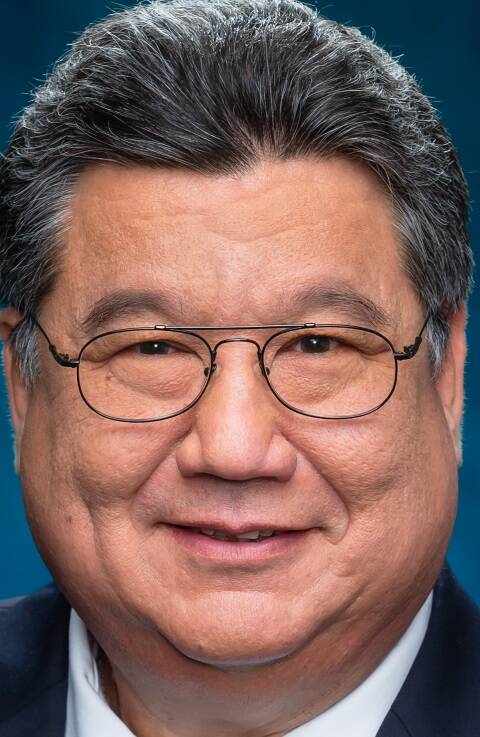With the novel coronavirus pandemic entering a third year, state Sen. President Ronald Kouchi said one of the biggest challenges facing Hawaii’s economy is “continued restrictions on foreign travel.”
“The Asian visitors were the largest spenders of our visitors that come to Hawaii,” Kouchi said in an online interview Wednesday. “And … we’ve seen with discounted airfares and deals on the hotels a continued stream of visitors from the United States. They have spent less. They’ve been able to secure deals that really weren’t available before.
“But without the Asian visitors, the daily spend isn’t there, so it becomes even more important to maintain some semblance of control of the flow of the visitors.”
According to statistics from the Hawaii Tourism Authority, visitor spending for November 2021 was $1.18 billion, down 11.5% from the $1.34 billion in visitor spending in prepandemic November 2019.
There were only 19,784 visitors from Japan through the first 11 months of 2020, an average of slightly less than 1,800 Japanese visitors monthly.
That’s in contrast to the 1,439,570 Japanese visitors in the first 11 months of 2019, an average of 130,870 visitors from Japan per month. Total spending by Japanese visitors in the first 11 months of 2021 was $68.4 million, a 96% drop from the $2.04 billion in the first 11 months of 2019.
As of Dec. 6, the U.S., including Hawaii, allows fully vaccinated foreign visitors — with some exceptions — to enter the country with a negative COVID-19 test taken no more than one day prior to the last leg of departure of travel to the U.S.
But with visitors from Japan — traditionally Hawaii’s largest visitor market in Asia — and South Korea subject to mandatory quarantines when they return home, visitor arrivals from Asian countries have continued to lag, as noted in the most recent economic forecast for Hawaii issued by the University of Hawaii Economic Research Organization, published on Dec. 17.
“Some recent improvements in international mobility have already been reversed,” the forecast states. “Japan now requires all residents to quarantine for two weeks upon their return from abroad; foreign visitors are not allowed into the country. South Korea recently imposed a mandatory 10-day quarantine upon arrival for all travelers.
“… While high vaccination rates in Japan, Korea, and Canada could limit the extent of an omicron-fueled virus surge, it is unclear how long the new variant may delay travel liberalization in these major markets.”
Kouchi said it’s more difficult to maintain parks and other natural resources “because we have less dollars to work with without the Asian visitors coming.”
He added that visitor fees for parks could lessen the environmental and lifestyle impacts brought by overtourism.
“I think that’s going to be an important tool going forward in managing the visitors that come and protecting the resource,” he said. “… The fees that we’ve already got in place started back in 2018 with the flooding on the north shore of Kauai. They put a carrying capacity of 900 visitors a day at Ke‘e Beach, the end of the beach on the north shore. That was to manage the resource and get the vehicles off of the side of the road. They’d be parked on both sides, and if you had a medical emergency, an emergency vehicle couldn’t get to you. There are reservations, and there are fees for the visitors who come in. And there’s a fee to park the cars. While it generated some money, it was more about managing the resource.
“When the pandemic hit, and Hana started getting overrun, (former Maui) Sen. (J. Kalani) English, who had visited Ke‘e Beach and saw the process there, implemented that at Wainapanapa (State Park). And with the parking fee and visitor fee, they’re scheduled to generate $3.5 million annually.”
Kouchi noted the Board of Land and Natural Resources has the authority to charge user fees and administrative fees for state parks and recreation areas.
“They’re about to implement a fee structure at Diamond Head,” he said. “They are looking at Iao Needle (on Maui) and Kokee on Kauai … and a couple of parks on Hawaii Island,” he said. “So, we could be generating over $20 million a year without adding any taxes to what we have, and that would be committed to upgrading our infrastructure, protecting our natural resource — hiring personnel to handle the enforcement and the personnel to maintain the facilities like the bathrooms in these areas.”
Email John Burnett at jburnett@hawaiitribune-herald.com.






